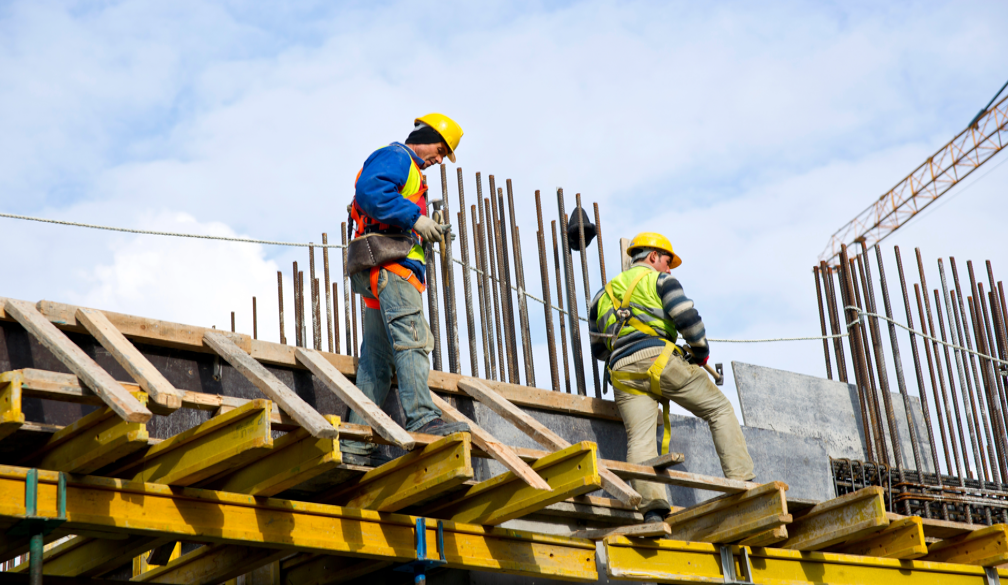10 Must Have Safety Vests and PPE for Construction Sites

Among the most hazardous workplaces are construction sites. Personal protective equipment (PPE) is essential to minimize risks and ensure worker safety. Safety vests and other PPE items enhance visibility, provide protection, and ensure compliance with safety regulations. Below, we have highlighted ten essential safety vests and PPE items for construction workers, detailing their importance and usage.
1. High Visibility Safety Vests
High visibility safety vests are essential on construction sites to ensure workers are seen, especially in low-light or high-traffic areas. These vests feature fluorescent colors like neon yellow, orange, or green and reflective strips for enhanced visibility.
Why this Matters:
- Lowers the chance of accidents brought on by poor visibility.
- Complies with OSHA and ANSI standards for workplace safety.
Tips for Choosing:
- Look for ANSI/ISEA 107-rated vests.
- Opt for Class 2 or Class 3 vests for high-risk environments like road construction or nighttime work.
2. Hard Hats
Hard hats are a staple of construction site PPE. They protect workers from falling objects, debris, and head injuries caused by impacts. Modern hard hats often include additional features like chin straps and built-in ventilation.
Why this Matters:
- Shields the head from life-threatening injuries.
- Some hard hats provide electrical insulation, adding extra safety.
Tips for Choosing:
- Ensure the hard hat meets ANSI Z89.1 standards.
- Choose the appropriate class: Class G (general), Class E (electrical), or Class C (conductive).
3. Work Gloves
Work gloves protect the hands from cuts, abrasions, and exposure to hazardous materials. Different gloves are designed for specific tasks, such as handling heavy equipment, working with chemicals, or welding.
Why this Matters:
- Prevents injuries caused by sharp objects, extreme temperatures, and repetitive motion.
- Provides better grip and control during manual tasks.
Tips for Choosing:
- Opt for gloves made from durable materials like leather, Kevlar, or nitrile.
- Match the glove type to the task, such as cut-resistant gloves for sharp tools.
4. Safety Glasses or Goggles
Protecting the eyes is crucial on construction sites where debris, dust, and chemicals are common. Safety glasses or goggles provide a barrier against flying particles and harmful substances.
Why this Matters:
- Reduces the risk of eye injuries caused by splashes, sparks, or impacts.
- Some goggles offer UV protection for outdoor work.
Tips for Choosing:
- Seek out eyewear that complies with ANSI Z87.1 requirements.
- Use anti-fog and scratch-resistant coatings for better performance.
5. Ear Protection (Ear Muffs or Earplugs)
Construction sites often have high noise levels from heavy machinery, drills, and vehicles. Prolonged exposure to loud noises can cause hearing damage or loss, making ear protection a must-have.
Why this Matters:
- Reduces noise exposure to safe levels.
- Prevents long-term hearing damage.
Tips for Choosing:
- Use ear muffs or earplugs with a Noise Reduction Rating (NRR) of at least 25-30 dB.
- Choose comfortable options for prolonged use.
6. Steel-Toe Boots
Protective footwear, such as steel-toe boots, is crucial for safeguarding the feet from heavy objects, sharp materials, and uneven terrain. They also provide slip resistance and support.
Why this Matters:
- Protects feet from falling objects and compression injuries.
- Offers stability on slippery or rough surfaces.
Tips for Choosing:
- Ensure the boots meet ASTM F2413 safety standards.
- Look for waterproof and slip-resistant features for outdoor sites.
7. Coveralls
Coveralls provide full-body protection from dirt, chemicals, and other hazardous substances. They’re useful when workers are exposed to harmful materials or extreme weather.
Why this Matters:
- Shields the body from exposure to harmful elements.
- Enhances comfort and mobility during long shifts.
Tips for Choosing:
- Choose flame-resistant (FR) coveralls for high-risk environments.
- Look for breathable materials for better comfort in warm conditions.
8. Respiratory Protection
Respirators and masks protect workers from inhaling dust, fumes, and hazardous chemicals. They’re commonly used in tasks like demolition, painting, and welding.
Why this Matters:
- Prevents respiratory issues caused by exposure to harmful particles.
- Ensures compliance with OSHA respiratory standards.
Tips for Choosing:
- Use N95 masks for basic protection against dust.
- For chemical exposure, opt for half-mask or full-face respirators with appropriate filters.
9. High-Visibility Jackets
In colder weather, high-visibility jackets combine the benefits of warmth and visibility. These jackets are made from insulated materials and feature reflective strips for visibility in low-light conditions.
Why this Matters:
- Keeps workers visible and warm during winter months.
- Provides added protection in low-visibility conditions.
Tips for Choosing:
- Select jackets rated for ANSI/ISEA 107 Class 2 or Class 3.
- Choose waterproof materials for outdoor sites.
10. Knee Pads
Knee pads are essential for workers who spend extended periods kneeling, such as electricians or plumbers. They protect the knees from strain, impact, and rough surfaces.
Why this Matters:
- Reduces stress on the knees, preventing long-term injuries.
- Enhances comfort and productivity during tasks requiring kneeling.
Tips for Choosing:
- For a snug fit, look for straps that can be adjusted.
- Choose knee pads with gel cushioning for maximum comfort.
Tips for Selecting and Using PPE
- Inspect PPE Regularly: Always check for signs of wear and tear before each use.
- Ensure Proper Fit: Properly fitting PPE is essential for effectiveness and comfort.
- Train Workers: Offer training to employees on how to use and maintain PPE correctly.
- Store Properly: Prolong its lifespan by keeping PPE in a clean, dry location.
Safety vests and PPE are critical for protecting construction workers from potential hazards. High-visibility vests, hard hats, work gloves, and other protective gear ensure compliance with safety standards while minimizing risks. Construction companies can create a safer, more efficient work environment by investing in quality PPE and encouraging proper use.









